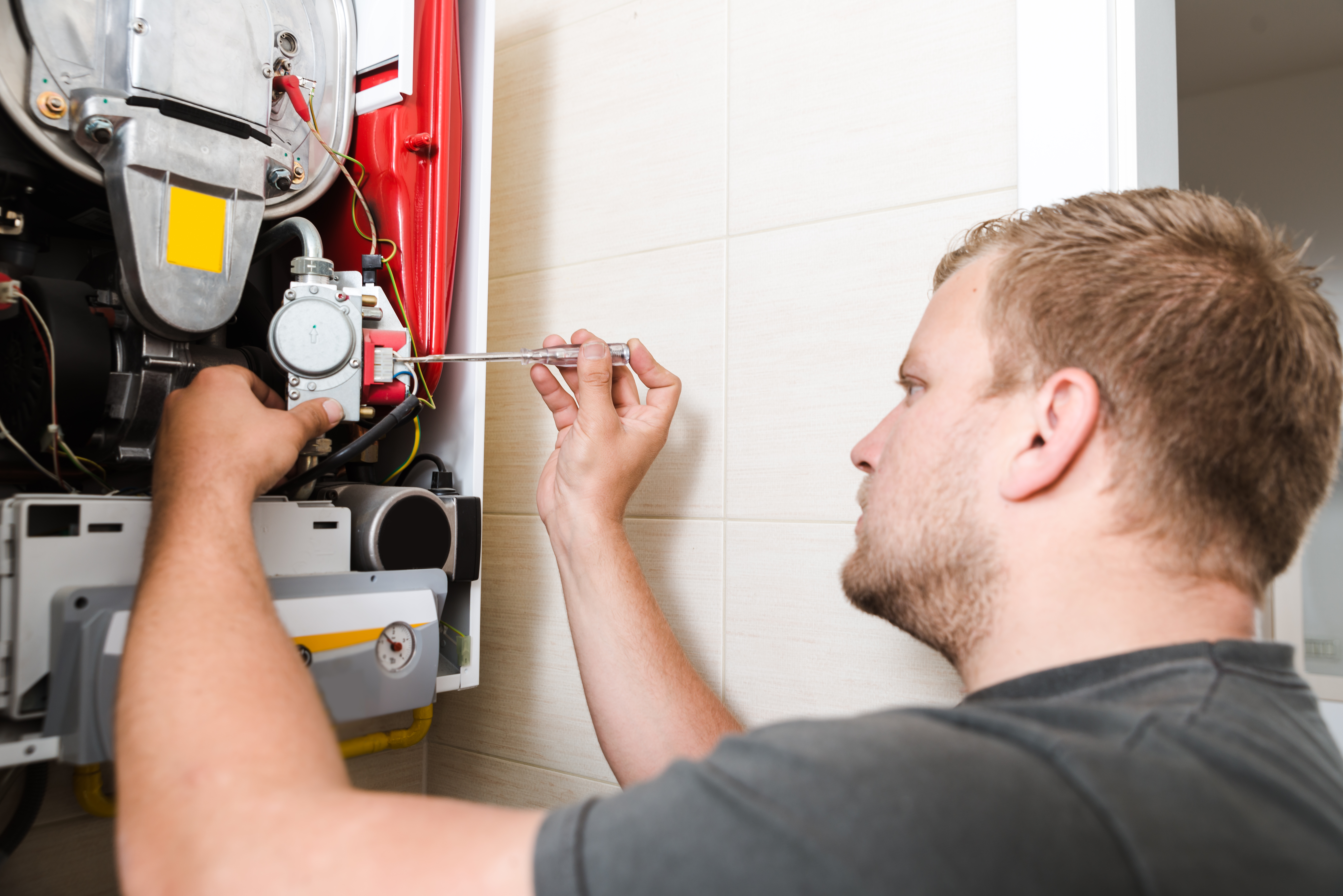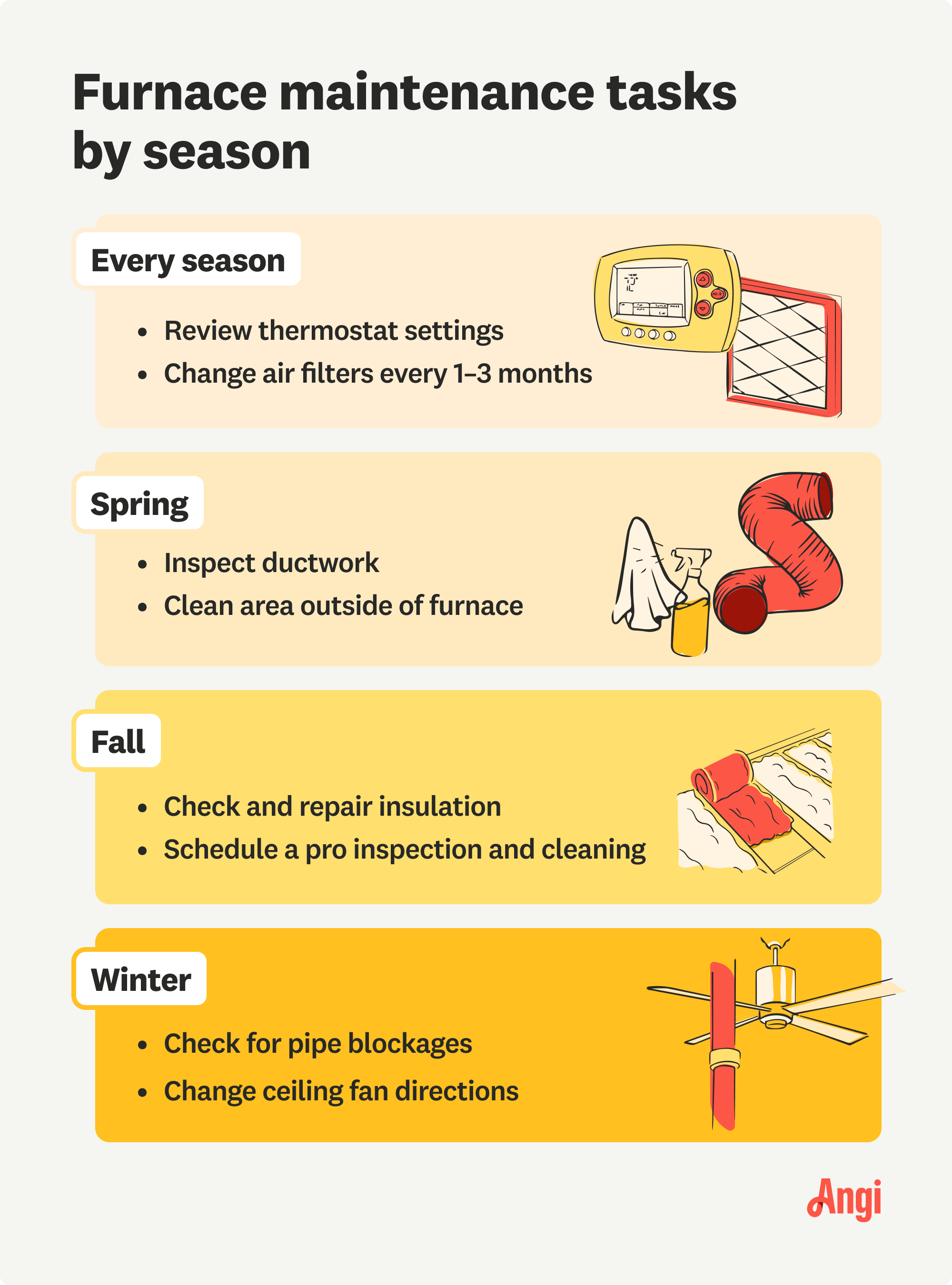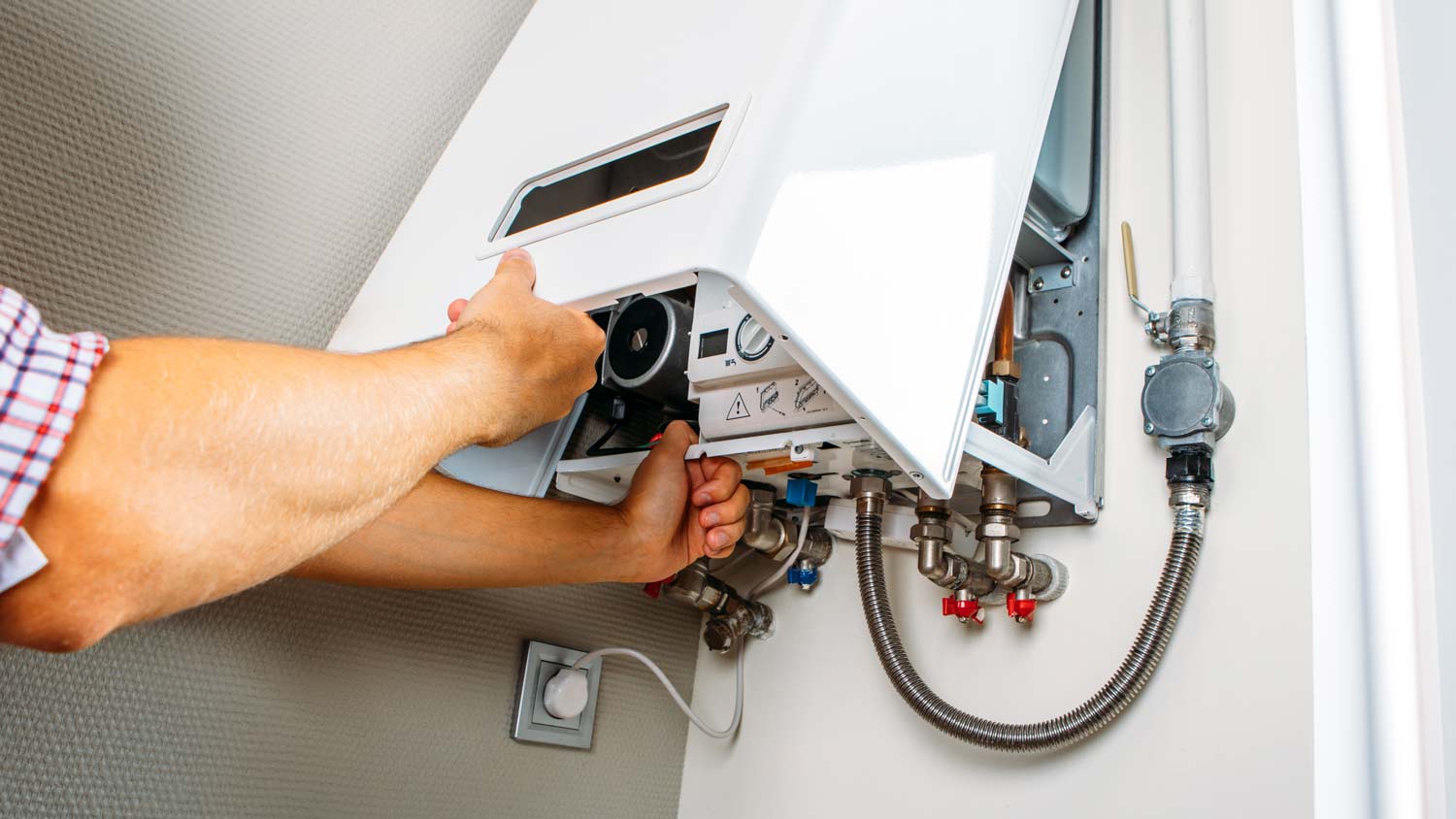
What you’ll pay in Columbus, OH, for furnace repairs depends on many factors. Here’s a breakdown of what can go wrong and the cost to fix those issues.
A new furnace in Minneapolis costs $4,800, on average, and most projects fall between $2,819 and $6,879. An HVAC pro will base your cost mostly on your home’s square footage, fuel type, and efficiency preferences.


The size of your home and the type of fuel you have available are the most significant cost factors to consider.
Always have a professional size your system for you since they have to consider home square footage, insulation quality, and more for optimal performance.
Minneapolis sees long, frigid winters, so investing in a high-efficiency furnace, while more costly up front, can pay for itself over time.
Many utility companies in Minneapolis offer rebates and other incentives if you choose a high-efficiency furnace.
New furnace costs in Minneapolis, Minnesota, average $4,800, and most homeowners pay somewhere between $2,819 and $6,879. Your total will depend mostly on the size of your home and the type of fuel you intend to use for your furnace. It’s a good idea to consider paying more up front for a high-efficiency furnace, which can save you money over time, especially in the brutal Minneapolis winters.
While most Minneapolis residents pay between $2,819 and $6,879 for a new furnace, some projects cost as much as $13,100. There are a few factors to consider that will help you get an accurate estimate for your specific project.
One of the first things a furnace installer will consider when pricing out your project is your home’s square footage. Furnaces are sized in British Thermal Units (BTUs), and units with higher BTU ratings can output more heat. You should always defer to a professional for proper system sizing because recommended BTUs vary by climate zone, home square footage, home age, insulation quality, lifestyle, and more.
The average home in Minneapolis is 1,600 square feet, and with the city’s location in climate zone 6, most homes need between 55 and 60 BTUs per square foot of living space. That’s an average of between 88,000 and 96,000 BTUs. A unit of this size costs between $3,500 and $4,000 for the materials alone. Of course, different home sizes will require different BTU ratings, which will come with varying material costs.
| Home Size (Sq. Ft.) | Recommended BTUs | Material Cost |
|---|---|---|
| 1,000 | 55,000–60,000 | $2,000–$2,400 |
| 1,500 | 82,500–90,000 | $3,200–$3,600 |
| 1,600 | 88,000–96,000 | $3,500–$4,000 |
| 2,000 | 110,000–120,000 | $4,000–$4,800 |
| 2,500 | 137,500–150,000 | $5,500–$6,000 |
Most homes in Minneapolis use natural gas as the primary fuel for home heating, and natural gas furnaces fall in the middle of the price range for a new furnace. Homeowners who use electricity as a fuel source for home heating will pay significantly less up front for the equipment, although operating costs will be higher. Oil furnaces are rare in the city, but they cost as much as or more than gas furnaces. Propane furnaces are often the most expensive, but they’re also rare in the area.
| Fuel Type | Cost Range | Pros | Cons |
|---|---|---|---|
| Electricity | $2,000–$7,000 | Most sustainable | Expensive to run |
| Gas | $3,800–$10,000 | High efficiency | No fuel storage |
| Oil | $6,500–$10,000 | High output | Low efficiency |
| Propane | $3,700–$13,100 | Fuel storage | Reliant on delivery |
New furnace costs also depend on the efficiency of the furnace you’re installing, which is measured by annual fuel utilization efficiency or AFUE. Furnaces with higher efficiency ratings cost more up front, but they can help you save money on running costs over time, especially in an area like Minneapolis that sees extremely cold weather that demands home heating for five months of the year.
Furnaces with an AFUE rating of 90% or higher qualify for Energy Star certification, as well as the 30% tax credit for home efficiency improvements. Many local utility companies in Minneapolis also offer local incentives for high-efficiency furnaces. For example, CenterPoint, one of the largest natural gas providers in the city, offers up to a $1,000 rebate for furnaces with an AFUE rating of 97% or higher.
| AFUE Rating | Cost Range | Cost w/Fed. Tax Credit |
|---|---|---|
| 56%–70% (low) | $2,800–$4,000 | N/A |
| 80%–83% (mid) | $4,000–$5,600 | N/A |
| 90%–98.5% (high) | $5,000–$6,800 | $3,500–$4,800 |
Some HVAC pros in Minneapolis will include the cost to disconnect and remove your old furnace in their labor charges. If yours doesn’t, you can expect a flat fee of between $60 and $300 for the service, which includes haul-away and disposal. You may also see additional charges up to $500 if you’re switching fuel types, although most conversions will add less than $250 for gas line capping when switching to electric.

Hiring an HVAC pro in Minneapolis, Minnesota, means paying between $1,000 and $4,000 in labor costs, with an average of $1,200. On an hourly basis, this is around 16% higher than you’d pay in most other areas due to the above-average cost of living in the city. While labor is expensive, it’s illegal to do your own furnace replacement. Even if it was legal, hiring a pro would be worth it to ensure a safe installation and proper furnace sizing.
In addition to labor, you’ll have to pay a permit fee for furnace replacement. Your pro will handle the permitting paperwork and schedule the required inspections, but you’ll be responsible for paying the fee. The City of Minneapolis charges a flat fee of $216.60 for furnace replacement permits.

Installing a new furnace will increase your home value by an average of $1,440 in Minneapolis, which represents a 30% return on investment (ROI). Sticking to a proper maintenance schedule will keep your ROI intact. Gas furnaces are the preferred option in Minnesota, where the higher efficiency reduces running costs through the brutal winters. Installing a new gas furnace in Minneapolis will maximize your ROI.
Home is the most important place on earth, which is why Angi has helped more than 150 million homeowners transform their houses into homes they adore. To help homeowners with their next project, Angi provides readers with the most accurate cost data and upholds strict editorial standards. We’ve surveyed over 10,000 real Angi customers about their project costs to develop the pricing data you see, so you can make the best decisions for you and your home. We pair this data with research from reputable sources, including the U.S. Bureau of Labor Statistics, academic journals, market studies, and interviews with industry experts—all to ensure our prices reflect real-world projects.
Want to help us improve our cost data? Send us a recent project quote to [email protected]. Quotes and personal information will not be shared publicly.
From average costs to expert advice, get all the answers you need to get your job done.

What you’ll pay in Columbus, OH, for furnace repairs depends on many factors. Here’s a breakdown of what can go wrong and the cost to fix those issues.

Inspections are an essential part of furnace maintenance. Prevent inconvenient breakdowns by budgeting for furnace inspection costs and repairs.

Factors such as labor and parts impact the final price of repairing a window AC unit. Learn all of the costs associated with window air conditioner repair.

If you need to repair a gas boiler or radiator heating system, you should first talk to a pro. Here are the top radiator repair questions you should ask.

Don’t be left out in the cold because of an old, worn-out furnace. Find out how long furnaces last, plus tips to keep them running longer.

Energy bills rising? Here’s how to perform a DIY duct leakage test to locate any damage in your ductwork and restore your energy-efficient home.